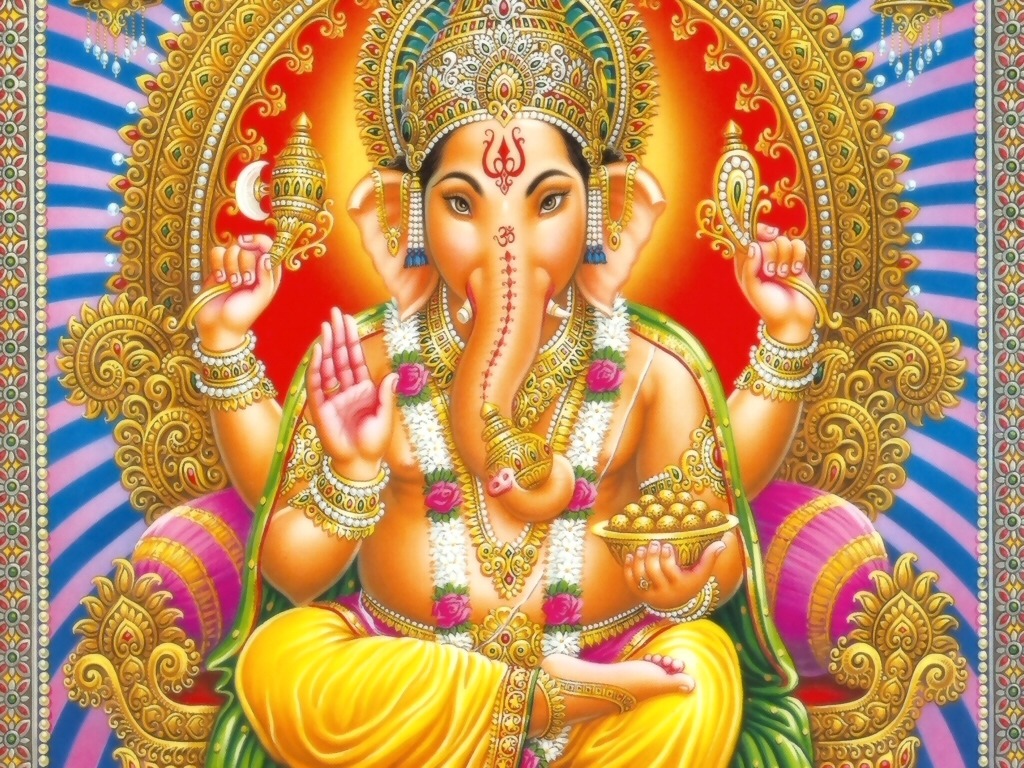Ganesh - Lord of good fortune
Teilen
Ganesh is one of the best known and loved deities in the Hindu pantheon of gods, and indeed is the most recognized outside of India. But who is this elephant headed fellow, and why is he so popular?
Ganesh (also spelled Ganesa or Ganesha and known as Ganapati, Vinayaka and Pillaiyar) is the Lord of Good Fortune who provides prosperity, fortune and success. He is the Lord of Beginnings and the Remover of Obstacles of both material and spiritual kinds. Interestingly, he also places obstacles in the path of those who need to be checked.
Because of these attributes, Ganesh is widely revered by almost all castes and in all parts of India, regardless of any other spiritual affiliations. His image is found everywhere, in many different forms, and he is invoked before the undertaking of any task.
Ganesh is also associated with the first Chakra, or energy wheel, which underpins all of the other Chakras and represents conservation, survival and material well-being. He is considered to be a patron of the arts and sciences and of letters. Devotees believe that if Ganesha is worshiped, he grants success, prosperity and protection against adversity. In a lesser known role, Ganesh is also the destroyer of vanity, selfishness and pride.
The attributes and characteristics of Ganesh have evolved over many centuries of Indian history. Several of the sacred Hindu texts relate myths and anecdotes associated with his birth and exploits and help to explain his distinct iconography. He is popularly held to be the son of Shiva and Parvati, although the (ancient Hindu and Jain texts narrating the history of the Universe and describing Hindu cosmology, philosophy and geography) disagree about his birth, stating that he may have been created by Shiva, or by Parvati, or by Shiva and Parvati, or may simply have been discovered by Shiva and Parvati.

It is a little known fact outside of India that Ganesh has a brother Skanda who is worshiped particularly in southern India as the embodiment of grace, bravery and love of virtuous deeds.
Iconic representations of Ganesh show considerable variation, his form changing over time from that of a simple elephant in earliest depictions to the Ganesh we know today, typically having the head of an elephant and a large rotund belly. He is generally shown with four arms, although the number may vary from two to sixteen. When in the four-armed configuration he usually holds his own broken tusk in his lower-right hand and a laddoo sweet in his lower-left hand which he tastes with his trunk. An axe or goad is held in the right upper hand and a noose is held in the left upper hand. In a modern variation, the lower-right hand does not hold the broken tusk but is turned toward the viewer in a gesture of protection and fearlessness (the abhaya mudra). Each of Ganesha's items carries it's own important spiritual significance and they (and the number of arms used to carry them) may vary to include a water lily, mace, discus, rosary, bowl of sweets, musical instrument, spear or staff, depending on the specific symbology intended by the artist.
There exist a large number of legends, myths and stories relating to Ganesh and his appearance, all reflecting the wealth of symbolism that attends him. The most famous is how he came to have an elephant's head. It is said that the goddess Parvati, wishing to bathe, created a boy and assigned him the task of guarding the entrance to her bathroom. When her husband Shiva returned from one his interminable battles, he was denied access by Ganesh and killed the boy in a fit of petulant rage, striking his head off with his sword. Parvati was understandably upset and so to soothe her Shiva sent out his warriors to fetch the head of the first dead creature they found, which happened to be that of an elephant. The head was attached to the body of the boy and he was brought back to life. The elephant's head symbolises unmatched wisdom and the gaining of knowledge through reflection and listening. And because of his role as his mother's doorkeeper, he is often placed facing doorways to keep out the unworthy.
Source: kashgar.com.au
